When it comes to setting up a home or commercial gym, the choice between a squat Squat Stand vs Power Rack is an important consideration. Both pieces of equipment serve distinct purposes in weightlifting and strength training routines, and their presence in a gym can significantly enhance the effectiveness and safety of various exercises.
Both the squat stand and power rack play crucial roles in a gym environment, offering safety, versatility, and the ability to perform a wide array of strength-building exercises. Whether it’s for personal use at home or in a commercial gym setting, the inclusion of these pieces of equipment is essential for anyone serious about weightlifting and strength training.
In this article, we’ll explore the distinctions between squat stands and power racks, delve into their respective pros and cons, highlight compatible exercises for each, and help you determine the ideal equipment based on your fitness goals.

Differences Between Squat Stand vs Power Rack
The differences between a squat stand and a power rack encompass various aspects such as size, safety features, versatility, weight capacity, adjustability, ease of use, cost, space requirements, exercise transition, and aesthetics. These factors are crucial for individuals considering the right equipment for their home or commercial gym setup.
| Aspect | Squat Stand | Power Rack |
|---|---|---|
| Size | Smaller and more portable | Larger and occupies more space |
| Safety Features | Typically equipped with spotter arms for safety | Enclosed cage structure with horizontal safety bars |
| Versatility | Suitable for basic lifts such as squats and presses | Allows for a wider range of exercises including squats, bench presses, pull-ups, and more |
| Weight Capacity | Generally has a lower weight capacity | Offers higher weight capacity due to its sturdy construction and enclosed design |
| Adjustability | Limited adjustability for height and position | Fully adjustable for various lift heights and spotter bar positions |
| Ease of Use | Easy to set up and use, suitable for beginners | May require some familiarity but offers comprehensive functionality for experienced lifters |
| Cost | Usually more cost-effective | Tends to be more expensive due to its larger and more complex design |
| Space Requirements | Takes up less floor space | Requires more floor space due to its larger footprint |
| Exercise Transition | Slower to transition between exercises | Quicker and easier to switch between different exercises |
| Aesthetics | Tends to have a simpler appearance | Has a bulkier and more imposing presence due to its cage structure |
Squat Stand vs Power Rack: Which one is better than the other?
The choice between a squat stand and a power rack depends on individual needs and preferences.
- Squat Stand: Ideal for those with limited space or budget, prioritizing simplicity and versatility. Best for basic exercises like squats and overhead presses.
- Power Rack: Suitable for users seeking maximum safety, versatility, and a comprehensive strength training experience. It provides added safety features, and accessory options, and is more accommodating for various exercises.
Choose a squat stand for simplicity and space-saving, or opt for a power rack for enhanced safety and versatility in a dedicated gym space.
What is a Squat Stand?
A squat stand is a piece of weightlifting equipment designed to provide support and safety for performing various barbell exercises, particularly squats. It consists of two vertical upright posts with adjustable heights, often made of steel or similar sturdy materials. The primary purpose of a squat stand is to hold the barbell at an appropriate height for the lifter to perform squats or other related exercises.
Squat stands are particularly suitable for performing basic barbell exercises such as squats, overhead presses, and bench presses. They are a popular choice for home gyms and training facilities due to their relative portability and space-saving design compared to larger equipment like power racks. This makes them an ideal option for individuals who have limited space but still want to engage in effective strength training.
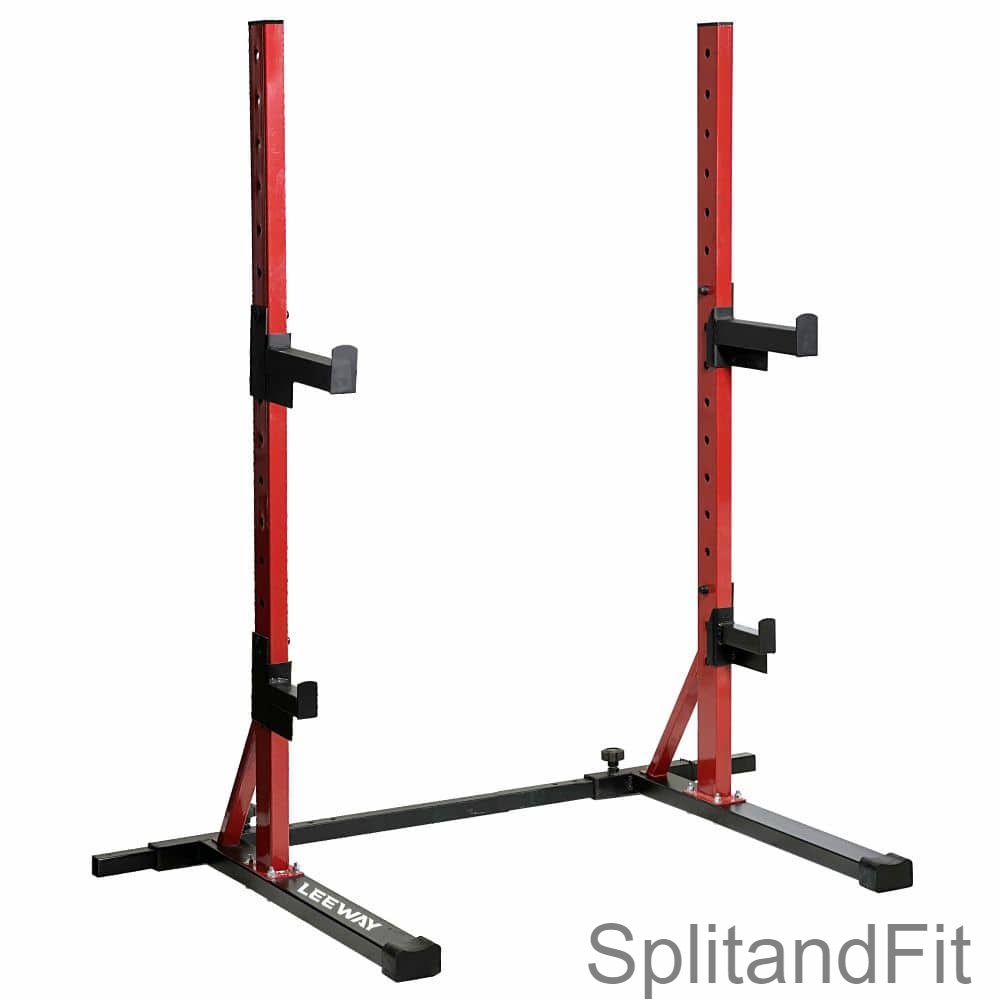
Key Features of Squat Stand
The key features of a squat stand include its adaptability to different lifters and exercise variations. The height of the upright posts can be adjusted to accommodate individuals of varying heights, ensuring that the barbell is positioned correctly for each lifter.
Below are the Key features of Squat Stand that make them ideal for people who have limited space.
- Adjustable Height: Customizable uprights for setting the desired height to accommodate different users and workout variations.
- Safety Spotter Arms: Essential safety feature to catch the barbell in case of failure during a lift, preventing potential injuries.
- Sturdy Frame: A robust and durable frame ensures stability, supporting heavy lifting and providing a secure platform for various exercises.
- Versatility: Designed for a range of exercises, not limited to squats, allowing users to perform diverse barbell workouts.
- J-Hooks or Barbell Holders: Secure and adjustable hooks provide a stable resting place for the barbell, facilitating easy setup for different exercises.
- Weight Capacity: Specified weight capacity to ensure the stand can handle the maximum load a user intends to lift.
- Compact Design: Space-efficient design, suitable for home gyms or areas with limited space, and often easy to store when not in use.
Exercises Performed on Squat Stand
A squat stand is a versatile piece of gym equipment that allows individuals to engage in a variety of strength training exercises. Its sturdy construction and adjustable features make it suitable for a wide range of workouts, providing a comprehensive platform for both beginners and seasoned lifters.
Here are some exercises that can be performed on a squat stand:
- Squats: The squat stand’s primary function is to facilitate various squat variations, including back squats, front squats, and goblet squats, promoting lower body strength and development.
- Bench Press: Utilizing a bench in conjunction with the squat stand allows for safe and effective bench press workouts, targeting the chest, shoulders, and triceps.
- Overhead Press: Elevating the barbell to shoulder height on the squat stand enables users to perform overhead presses, effectively working the shoulder muscles.
- Deadlifts: With the bar set at the appropriate height, deadlifts can be performed, targeting the hamstrings, glutes, and lower back for a comprehensive posterior chain workout.
- Barbell Rows: The squat stand provides a stable setup for barbell rows, promoting upper back and lat muscle development.
- Rack Pulls: Elevating the barbell to a higher position on the squat stand allows for rack pulls, emphasizing the upper back and traps.
- Dips: Some squat stands come with optional dip attachments, enabling users to incorporate dip exercises for triceps and chest development.
- Calf Raises: By using a step or platform, individuals can perform calf raises with the barbell on their shoulders, targeting the calf muscles.
- Lunges: Stepping forward or backward within the squat stand’s confines allows for safe and controlled lunges, promoting leg strength and stability.
- Shrugs: Elevating the barbell to an appropriate height facilitates shrug exercises, targeting the trapezius muscles.
These exercises showcase the versatility of the squat stand, making it a valuable asset for a well-rounded strength training routine. Always ensure proper form and safety precautions while performing these exercises.
Pros and Cons of Squat Stand
| Aspects | Pros | Cons |
|---|---|---|
| Adjustability | Adjustable height allows users of various heights to perform exercises comfortably. It accommodates different workout preferences and variations. | Some models may have limited adjustment options, restricting the range of users. |
| Versatility | Squat stands are versatile, supporting a wide range of exercises like squats, bench presses, deadlifts, and more. They offer a comprehensive platform for strength training. | Limited compared to power racks, which may have additional features and attachment options. |
| Space Efficiency | Squat stands are generally more space-efficient than power racks, making them suitable for home gyms or areas with limited space. They are often easier to store when not in use. | Might lack some features and stability provided by larger gym equipment. |
| Safety Features | Equipped with safety spotter arms, providing a safety net in case of failed lifts, enhancing user safety during workouts. | Spotter arms have weight limits, and improper use may still pose risks if not used correctly. |
| Cost | Squat stands are generally more budget-friendly than power racks, offering a cost-effective option for individuals looking to set up a home gym. | The lower cost may come with trade-offs in terms of features and stability. |
| Mobility | Some squat stands are designed for easy mobility, with wheels or disassembly options, making them convenient for relocation or storage. | Increased mobility may compromise stability during intense workouts. |
| Assembly and Setup | Squat stands are typically easier to assemble than larger gym equipment, making them user-friendly for those setting up a home gym. | Assembly complexity may vary, and some users may still find it challenging. |
What is a Power Rack?
A power rack, also known as a squat rack or a power cage, is a piece of weightlifting equipment designed to support and secure the barbell during various strength training exercises such as squats, bench presses, and shoulder presses. It typically consists of four vertical posts with adjustable horizontal bars, allowing for personalized positioning according to the lifter’s height and workout requirements.
Additionally, power racks often feature safety mechanisms such as spotter arms to ensure a safe lifting experience, making them an essential component of any home or commercial gym setup.
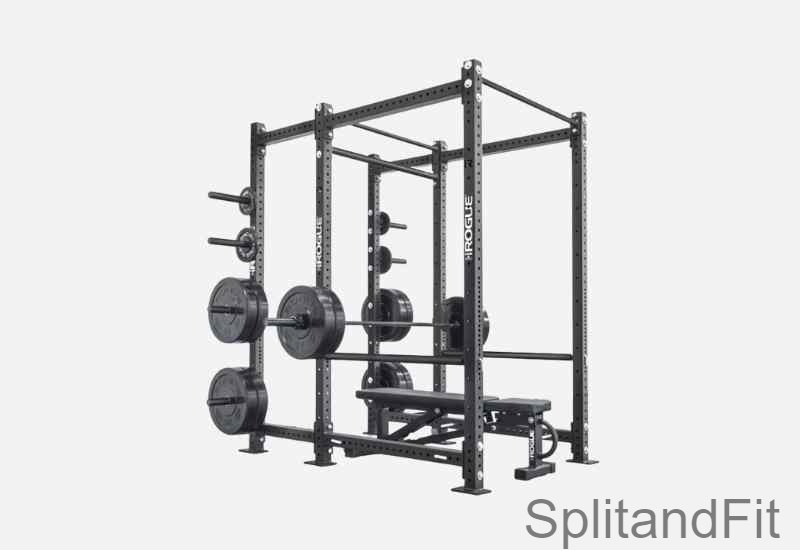
Key Features of Power Rack
Power racks, also known as squat racks or cages, are essential pieces of equipment for strength training and weightlifting. They provide a versatile and secure environment for a variety of exercises, making them a cornerstone in home and commercial gyms.
Here are 7 key features of a power rack:
- Adjustable Safety Pins: Power racks come with adjustable safety pins or spotter arms that can be set at different heights. These serve as a safety mechanism to catch the barbell in case of failed lifts, providing enhanced user safety.
- Pull-Up Bar: Most power racks are equipped with a built-in pull-up bar, allowing users to perform a variety of upper body exercises, such as pull-ups and hanging leg raises, adding versatility to the equipment.
- Weight Plate Storage: Many power racks include weight plate storage pegs to keep your plates organized and easily accessible. This feature helps in maintaining a tidy workout space.
- J-Hooks or Barbell Holders: Adjustable J-hooks or barbell holders provide a secure and customizable resting place for the barbell, facilitating easy setup for various exercises like squats, bench presses, and overhead presses.
- Versatility: Power racks offer a wide range of exercises beyond squats, including bench presses, deadlifts, pull-ups, dips (with optional attachments), and more. This versatility makes them a comprehensive solution for strength training.
- Sturdy Frame: Built with a robust and durable frame, power racks provide stability and support for heavy lifting. The sturdy construction allows users to safely lift heavy weights without compromising safety.
- Band Pegs or Attachments: Some power racks come with band pegs or attachment points, allowing users to incorporate resistance bands for added resistance during exercises. This feature enhances the effectiveness of dynamic and explosive movements.
These key features make power racks a popular choice for serious weightlifters and home gym enthusiasts, providing a secure and versatile platform for a wide range of strength training exercises.
Exercises Performed on Power Rack
A power rack is a versatile piece of gym equipment that supports a wide range of strength training exercises. Here are some exercises that can be performed on a power rack:
- Squats: Power racks are designed for squats, allowing users to perform various squat variations, including back squats, front squats, and overhead squats.
- Bench Press: The adjustable J-hooks or barbell holders in a power rack make it suitable for bench press exercises, providing a secure setup for both flat and incline bench presses.
- Overhead Press: With the safety of adjustable spotter arms, power racks are ideal for overhead press exercises to target the shoulders and triceps.
- Deadlifts: Users can set the barbell at the desired height within the power rack for deadlifts or rack pulls, focusing on the lower back, hamstrings, and glutes.
- Pull-Ups and Chin-Ups: The built-in pull-up bar on a power rack allows users to perform pull-ups and chin-ups, engaging the muscles in the back, arms, and core.
- Dips: Some power racks come with dip attachments or bars, enabling users to perform dip exercises for chest and triceps development.
- Rack Pulls: Elevating the barbell within the power rack allows for rack pulls, emphasizing the upper back, traps, and grip strength.
- Barbell Rows: Power racks provide stability for barbell rows, targeting the muscles in the upper back and lats.
- Rack Push Press: Users can perform the rack push press, a compound movement that combines leg drive with upper body strength.
- Landmine Exercises: Some power racks have landmine attachment points, allowing for landmine exercises like landmine rows and landmine presses.
- Box Squats: Adjusting the safety pins in a power rack enables users to perform box squats, focusing on controlled movements and depth.
- Hanging Leg Raises: The pull-up bar on the power rack provides a sturdy anchor for hanging leg raises, engaging the abdominal muscles.
These exercises demonstrate the versatility of power racks, making them a comprehensive and essential tool for a well-rounded strength training routine. Always ensure proper form and safety precautions while using the power rack for different exercises.
Pros and Cons of Power Rack
| Aspects | Pros | Cons |
|---|---|---|
| Safety and Versatility | Provides a secure environment for heavy lifts with adjustable safety pins or spotter arms, minimizing the risk of injury. Offers versatility by supporting various compound exercises, catering to a comprehensive strength training routine. | Takes up a relatively larger footprint compared to other gym equipment, requiring dedicated space. |
| Adjustability | Adjustable features allow users to customize the height of safety pins and J-hooks, accommodating different body sizes and exercise variations. | Assembly and adjustment may be more complex compared to simpler gym equipment, requiring some time and effort. |
| Built-In Accessories | Comes with built-in pull-up bars, dip attachments, and other accessories, adding value to the equipment and expanding exercise options. | Some accessories may be limited or not included, requiring additional purchases for a fully equipped setup. |
| Sturdy Construction | Features a robust frame designed to handle heavy loads, providing stability and safety during intense workouts. | The initial cost may be higher compared to simpler gym equipment, making it a significant investment for home gym enthusiasts. |
| Plate Storage | Often includes weight plate storage pegs, helping to keep the workout area organized and plates easily accessible. | Weight plate storage may be limited, and additional storage solutions might be needed for larger plate collections. |
| Muscle Engagement | Supports a wide range of compound movements, engaging multiple muscle groups simultaneously, and promoting efficient and effective workouts. | Users may require assistance or a spotter, especially for certain exercises, adding a dependency on workout partners. |
| Progress Tracking | Adjustable safety features enable users to push their limits, promoting progressive overload and continuous strength gains. | Supports a wide range of compound movements, engaging multiple muscle groups simultaneously, and promoting efficient and effective workouts. |
| Space Utilization | Maximizes space utilization by incorporating multiple exercise options within a single piece of equipment, making it ideal for home gyms. | The large footprint may be a limitation for those with limited space, making it challenging to fit into smaller workout areas. |
Understanding these pros and cons can help individuals make informed decisions based on their specific fitness goals, available space, and budget considerations.
Typical Equipment Included With a Squat Stand and a Power Rack
| Equipment Included | Squat Stand | Power Rack |
|---|---|---|
| Adjustable Uprights | ✓ Adjust the height for different exercises and users. | ✓ Allows customization of height for various exercises and user sizes. |
| Safety Spotter Arms | ✓ Provides a safety net in case of failed lifts. | ✓ Adjustable safety pins or spotter arms for enhanced safety. |
| J-Hooks or Barbell Holders | ✓ Secure a resting place for the barbell during exercises. | ✓ Adjustable J-hooks or holders for stability and easy setup. |
| Pull-Up Bar | ✗ Not always included; depends on the specific model. | ✓ Built-in pull-up bar for upper body exercises. |
| Weight Plate Storage | ✗ Typically not included; storage may be limited. | ✓ Secure a resting place for the barbell during exercises. |
| Dip Bars | ✗ Not standard but may have optional attachments. | ✓ Some models include dip bars or attachment points for dips. |
| Mobility Features | ✓ Often includes weight plate storage pegs for the organization. | ✗ Generally less mobile due to larger and heavier construction. |
| Versatility | ✓ Supports a variety of exercises, but options may be limited. | ✓ Offers extensive versatility, accommodating a wide range of exercises. |
This table highlights the key equipment typically included in squat stands and power racks, aiding in making an informed choice based on individual preferences, workout requirements, and available space.
Frequent Question Answers
| Question | Answer |
|---|---|
| Do I need a power rack or squat stand? | The choice depends on individual needs and space constraints. A squat stand is suitable for limited space or budget, offering versatility but may lack certain safety features. On the other hand, a power rack provides enhanced safety and stability, making it ideal for heavy lifting and solo workouts but requires more space. |
| What is the difference between a rack and a stand? | The key differences lie in size, safety features, and versatility. A squat stand offers versatility for exercises like squats, overhead presses, and pullups, while a power rack provides enhanced safety with spotter arms and adjustable safety bars, making it ideal for heavy lifting and solo workouts. |
| Is it worth getting a squat rack? | It can be worth it for those with limited space or budget, as it offers versatility for various exercises. However, it may lack certain safety features compared to a power rack. |
| What are the disadvantages of a squat rack? | The main disadvantages include fewer safety features compared to a power rack, potentially limiting heavy lifting and posing safety concerns during solo workouts. |
| Are power racks safer than squat racks? | Yes, power racks are generally considered safer due to their enhanced safety features such as spotter arms and adjustable safety bars, making them ideal for heavy lifting and solo workouts. |
| Do I really need a power rack? | It depends on workout goals, available space, and budget considerations. A power rack provides enhanced safety and stability, making it ideal for heavy lifting and solo workouts but requires more space. |
| What is a good alternative to a squat rack? | A good alternative could be a power rack, particularly for those concerned about safety and stability during heavy lifting and solo workouts. |
| Is it OK to bench in a power rack? | Yes, it is safe and common to bench press in a power rack, as it provides the necessary safety features for this exercise. |
| Is a power rack enough for a home gym? | A power rack can be a substantial addition to a home gym, providing enhanced safety and stability for various strength training exercises, especially for those focused on heavy lifting and solo workouts. |
Conclusion
In conclusion, the choice between a squat stand and a power rack depends on individual needs, space constraints, and workout goals. A squat stand is suitable for limited space or budget and offers versatility, while a power rack provides enhanced safety and stability, making it ideal for heavy lifting and solo workouts but requires more space. Ultimately, the decision should align with specific workout goals, available space, and budget considerations.
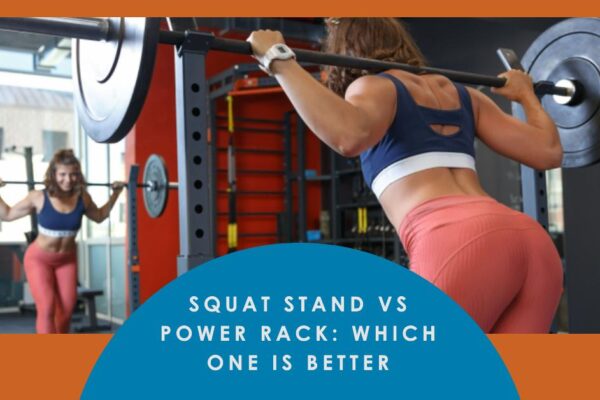


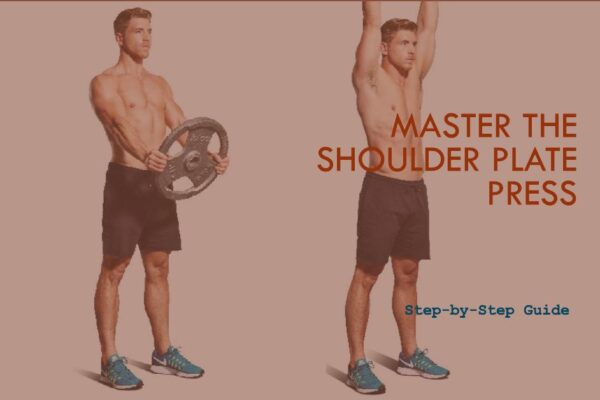
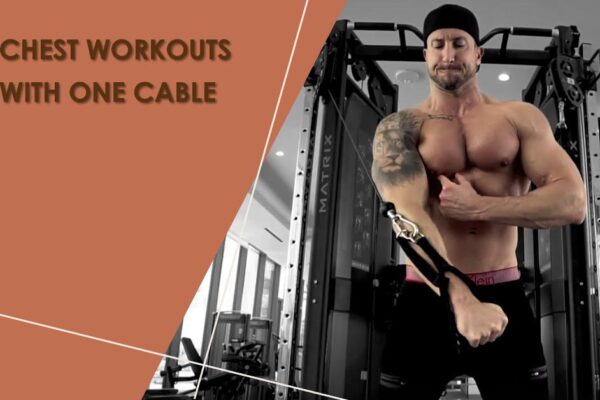
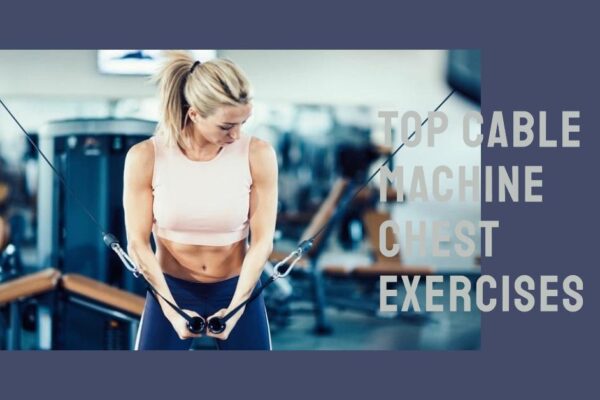
Leave a Reply